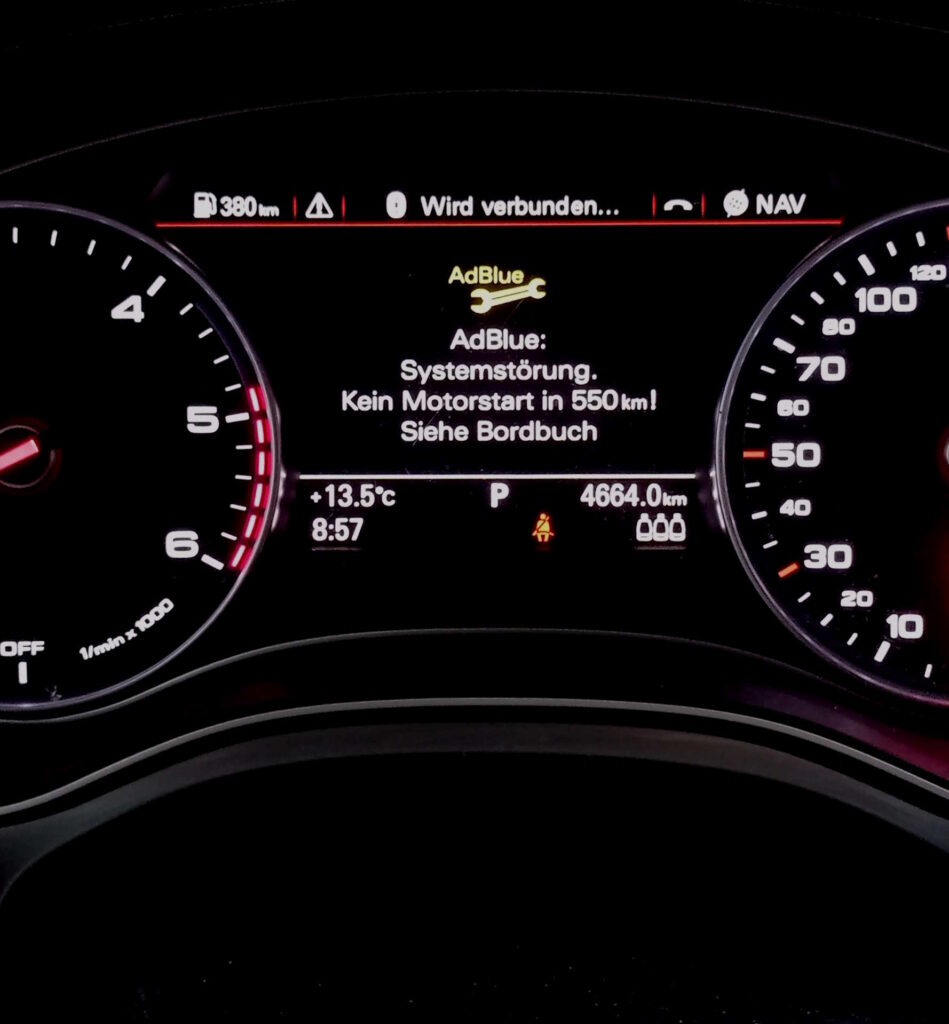AdBlue is a special fluid based on urea.
SCR (Selective Catalytic Reduction) – AdBlue injection system, installed on diesel vehicles with EURO5 and EURO6 emission standards. The regulations require reducing the emission of nitrogen oxides NOx into the atmosphere, which are formed at high temperatures and an increased oxygen content during the combustion of fuel. Car manufacturers have developed a number of systems that are designed to deal with NOx, such as catalytic converter, EGR, direct injection, etc.
The reason why SCR is not installed in the gasoline engine is that the temperature of the exhaust gases in this engine is much higher compared to “diesels” and therefore it is enough to heat the cats to a high temperature in order to start a reaction with the exhaust gases and significantly reduce the NOx content. .
In the case of engines running on diesel, the picture is somewhat different and engineers have come up with another way to reduce the NOx content in exhaust gases.
How does SCR work?
The system consists of:
- Tank for urea
- Pump
- Fluid lines
- Heating element of the tank and line
- AdBlue temperature and level sensors
- Nozzle
- Mixer
- Additional exhaust gas temperature sensor
- Sensor control unit
- Additional so-called. reducing catalytic converters
- SCR control unit
When the temperature of the reductive cats is over 200C and the exhaust gas flow is high enough, AdBlue is injected through a nozzle located between particulate filter and the reductive cats. Further, the mixer, which is an impeller in shape, sprays the urea into small drops. At this stage, urea decomposes under the influence of temperature and water vapor into ammonia NH3 and carbon dioxide CO2. Nitrogen oxide reacts with ammonia to form water H2O and nitrogen N2 in the reduction cats.
The volume of injected urea is controlled by the urea control unit.
Disadvantages of SCR:
 The downside of this system is the need to constantly monitor the level of AdBlue, the performance of the system, the quality of the liquid, and even the temperature outside, because despite the heating element, urea can still freeze. In this case, the engine not only works in limp mode, but after a certain number of starts or traveled distance it will not start in accordance with the regulations of the EURO5 standards.
The downside of this system is the need to constantly monitor the level of AdBlue, the performance of the system, the quality of the liquid, and even the temperature outside, because despite the heating element, urea can still freeze. In this case, the engine not only works in limp mode, but after a certain number of starts or traveled distance it will not start in accordance with the regulations of the EURO5 standards.
DISABLING ADBLUE
There are also vehicle owners who want to disable the AdBlue system. Emission standards and regulations are strict in many countries, and a missing or disabled AdBlue system can lead to inspection failure in some cases.
However, there are countries with lower emission standards where disabling the SCR system does not affect the chances of passing inspection. In such cases, local regulations and provisions should be checked to determine if deleting the system is permissible.
We are able to disable the AdBlue injection function on many vehicles.
HOW MUCH ADBLUE DOES A CAR NEED?
The AdBlue consumption of a car depends on various factors such as the engine type, vehicle size, driving style, and driving conditions. Generally, the average consumption is around 3 to 5 percent of the diesel fuel consumption.
A rough estimate suggests that a car requires approximately 1.5 to 2 liters of AdBlue per 1,000 kilometers. However, this can vary depending on the vehicle model and the mentioned factors. It is important to regularly check the AdBlue level and refill it in a timely manner to ensure proper functioning of the Selective Catalytic Reduction (SCR) system.
ADBLUE PRICE
The price of AdBlue can vary depending on the country, region, provider, and quantity. Typically, AdBlue is available either in bottles or containers for retail sales or in larger quantities such as IBC tanks or fuel station dispensers.
The retail price of AdBlue usually ranges between 0.60 and 1.50 euros per liter. When purchased in larger quantities, for example, in an IBC tank, the price per liter may be slightly lower.
However, it is important to note that this is just a general price indication and actual prices may vary. It is recommended to contact local suppliers and fuel stations to determine the exact prices in your region.
